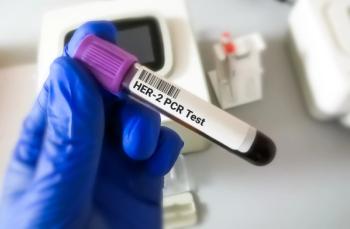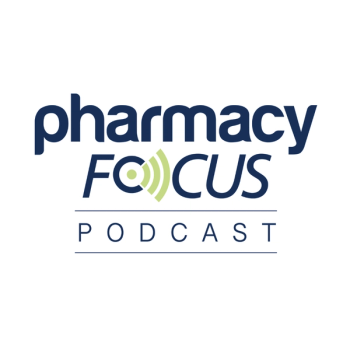
Many patients do not attain sufficient disease control with inhaled corticosteroids in combination with long-acting β-2 agonists and remain vulnerable to exacerbations.

Many patients do not attain sufficient disease control with inhaled corticosteroids in combination with long-acting β-2 agonists and remain vulnerable to exacerbations.

Sara Rogers, PharmD, discusses the value of the Precision Medicine World Conference 2025 for pharmacy professionals, highlighting key sessions and opportunities aimed to advance precision medicine and pharmacogenomic (PGx) practices.

S-337395 demonstrated an 88.4% reduction in viral load and had a statistically significant improvement in clinical symptoms scores.

Naga Vara Kishore Pillarsetty, PhD, discusses advancements in radiopharmaceuticals for cancer therapy, noting common supply chain challenges, radiation safety measures, and patient misconceptions with the use of these drugs.

Judith Alberto, MHA, RPh, BCOP, discusses the COA 2025 Community Oncology Conference, emphasizing its focus on transparency in oncology and the role of data in supporting pharmacists' contributions to patient care.

Fitusiran is part of a generation of novel RNA interference therapies and is designed for subcutaneous administration for the prophylactic treatment of hemophilia A or B.

The diagnostic identifies patients who may be eligible for treatment with fam-trastuzumab-deruxtecan-nxki (Enhertu; Daiichi-Sankyo, AstraZeneca).

These results provide a pediatric lens into the potential risk of thromboembolic events in patients with dermatomyositis.

Expert weighs in on data from the AQUILA trial and Johnson & Johnson's approval request for daratumumab for smoldering multiple myeloma.

Continuous dosing of ribociclib was associated with better tolerability and outcomes.

Myelofibrosis patients with CALR mutations have lower responses to symptoms and higher rates of anemia after 6 months of therapy with ruxolitinib.

The model also predicted prevalent cases of decompensated cirrhosis would more than triple, incident liver cancer cases would nearly double, and transplant almost quadruple.

Although there were increases in prescriptions during the studies’ durations, the proportion of anxiety or pain medications on the same day of intrauterine device (IUD) insertion procedures were low.

Cyclin-dependent kinase 4/6 (CDK 4/6) inhibitors have transformed the treatment of hormone receptor-positive/HER2-negative breast cancer across metastatic and early-stage settings, with ongoing research exploring their potential in additional breast cancer subtypes, combination therapies, and aggressive disease scenarios.

The regenerative medicine advanced therapy designation expedites the development and review of regenerative medications that have the potential to address unmet needs for serious or life-threatening diseases.

Statin use is not associated with a change in incident chronic kidney disease (CKD) and estimated glomerular filtration rate in adult patients aged 65 and older.

The diabetes treatment landscape is rapidly evolving, with new combination therapies and oral GLP-1 medications, positioning pharmacists to have an important role in personalizing care.

The approval includes indications for rheumatoid arthritis, giant cell arteritis, polyarticular juvenile idiopathic arthritis, systemic juvenile idiopathic arthritis, and COVID-19.

Donna Ryan, MD discusses GLP-1 medications and new developments on the horizon, while providing some best practices for patients initiating treatment, including important nutritional and lifestyle changes,

Atopic dermatitis significantly impacts quality of life, and requires personalized management through trigger identification, skin barrier maintenance, and a range of topical, oral, and biologic therapies to reduce symptoms and prevent flare-ups.

The drug is a selective NaV1.8 pain signal inhibitor and is the first new class of medication to treat acute pain in over 20 years.

Meloxicam and rizatriptan reduces migraine pain and help patients return to normal functioning with efficacy through 24 to 48 hours after a single dose for some patients.

Digoxen is the active ingredient found in the foxglove plant and is commonly used to treat heart failure.

Apitegromab is a muscle-targeted therapy for improvement of motor function in individuals with spinal muscular atrophy.

Lu-edotreotide (ITM-11; ITM) met its primary endpoint of prolonging progression-free survival (PFS).

Hypertrophic cardiomyopathy is caused by abnormal genes in the heart muscle, causing the left ventricle to become thicker and effecting blood flow.

Children and adults with cancer have differing immune system responses, mutational burdens, and tissue microenvironments.

Melody Chang, RPh, MBA, BCOP, explains how American Oncology Network leveraged its experience with the Oncology Care Model to address challenges when adopting the Enhanced Oncology Model.

The overall survival data were immature at the primary analysis of the study.

Diagnosing anemia, a serious and common complication of patients with myelofibrosis, could be made easier with the use of red cell distribution width assessment.